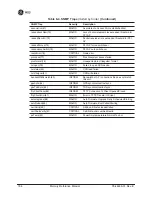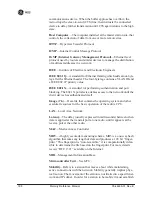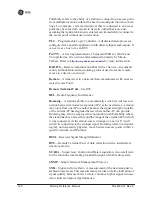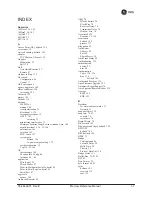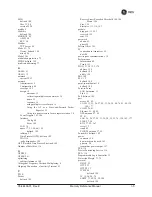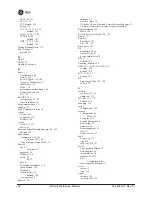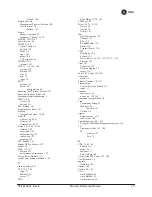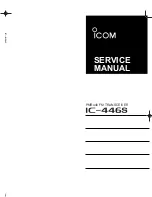
05-4446A01, Rev. E
Mercury Reference Manual
187
Digital Signal Processing—See DSP.
DSP—Digital Signal Processing. DSP circuitry is responsible for the
most critical real-time tasks; primarily modulation, demodulation, and
servicing of the data port.
DTE—Data Terminal Equipment. A device that provides data in the
form of digital signals at its output. Connects to the DCE device.
Encapsulation—Process in by which, a complete data packet, such as
MODBUS™ frame or any other polled asynchronous protocol frame, is
placed in the data portion of another protocol frame (in this case IP) to
be transported over a network. Typically this action is done at the trans-
mitting end, before being sent as an IP packet to a network. A similar
reversed process is applied at the other end of the network extracting the
data from the IP envelope, resulting in the original packet in the original
protocol.
Endpoint—Data equipment connected to the Ethernet port of the radio.
Equalization—The process of reducing the effects of amplitude, fre-
quency or phase distortion with compensating networks.
Fade Margin—The greatest tolerable reduction in average received
signal strength that will be anticipated under most conditions. Provides
an allowance for reduced signal strength due to multipath, slight antenna
movement or changing atmospheric losses. A fade margin of 15 to 20
dB is usually sufficient in most systems.
Fragmentation—A technique used for breaking a large message down
into smaller parts so it can be accommodated by a less capable media.
Frame—A segment of data that adheres to a specific data protocol and
contains definite start and end points. It provides a method of synchro-
nizing transmissions.
Frequency Hopping—The spread spectrum technique used by the
transceiver, where two or more associated radios change their operating
frequencies many times per second using a set pattern. Since the pattern
appears to jump around, it is said to “hop” from one frequency to
another.
GPS—Global Positioning System. A constellation of orbiting satellites
used for navigation and timing data. Although 24 satellites are normally
active, a number of spares are also available in case of malfunction.
Originally designed for military applications by the U.S. Department of
Defense, GPS was released for civilian use in the 1980s. GPS satellites
operate in the vicinity of the “L” frequency band (1500 MHz).
Hardware Flow Control—A transceiver feature used to prevent data
buffer overruns when handling high-speed data from the connected data
Summary of Contents for Mercury 3650
Page 9: ...viii Mercury Reference Manual 05 4446A01 Rev E ...
Page 11: ...2 Mercury Reference Manual 05 4446A01 Rev E ...
Page 31: ...22 Mercury Reference Manual 05 4446A01 Rev E ...
Page 155: ...146 Mercury Reference Manual 05 4446A01 Rev E ...
Page 157: ...148 Mercury Reference Manual 05 4446A01 Rev E ...
Page 171: ...162 Mercury Reference Manual 05 4446A01 Rev E ...
Page 185: ...176 Mercury Reference Manual 05 4446A01 Rev E ...
Page 201: ...192 Mercury Reference Manual 05 4446A01 Rev E ...












